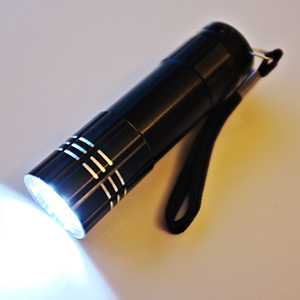Canon 1Ds Mk II - CAMERA
70 mm - LENS
F 11- F-STOP
1/250 sec - SHUTTER SPEED
100 - FILM SPEED
Flash - LIGHT SOURCE
This lighting technique is probably best referred to as beauty lighting and suits portraits and head-shots.
Granted the slightly tongue-in-cheek title to this technique teases that there might actually be a 'basic' 6 light set-up but truth be told this is one of the easier ones to get right.
This is a shoot that I did many years ago, way back in 2009. Back then I was looking very closely at other photographers lighting and reverse engineering their set-ups. This lighting is very famously used by Jill Greenberg in her crying baby project and then later with several of her animal projects. In fact looking at her work over the years you can actually see that nearly all of her shots are a variation of this lighting technique in one form or another.
Truth be told I'm not completely happy with my finished shots for this shoot and in hindsight and with more experience under my belt I can certainly see things that I would change. Firstly let me go over the lighting technique itself and then I'll come back and talk about a few tweaks I would make if I was shooting this again. I say 'tweaks' because it's not the set-up and light placement I take issue with but more to do with the power settings for each light that could be adjusted slightly.
The 6 light set-up: 1 hair light above, 2 side lights, 2 fill lights and 1 ring-flash.
The set-up itself obviously requires 6 separate heads: one ring-flash, one overhead hair light, two side hair lights and two fill umbrellas. In my set-up here I was using a beauty dish above as a hair light but this could be substituted by a honeycomb or snoot (space permitting), also I'm using two fill umbrellas but again these could be substituted for soft boxes. Something to note from my diagram here is that I didn't have a boom on the day so my beauty dish hair-light is just on a stand behind the black backdrop. This isn't ideal as it would of been nice to get more light on top of the models head, something that a boom would of enabled, also I was constantly fighting the threat of flare into the lens because that light was so far back and virtually pointed straight into camera.
This technique is probably better suited to portraits, head-shots or half body shots, the reasons for this is that its a very beatifying light, it wraps the model in light and it can be tricky to define structure with so much light. When you're shooting full body or even 3/4 length some of the lighting definition gets lost and in my opinion loses impact. Also this is a major pain to light evenly when showing the full body, the side lights would either have to be large strip-boxes or the sidelights would have to be set quite far back to provide even light. On top of this I dread to think of the 'spaghetti junction' of shadows being cast on the floor at her feet, that would not be pretty to retouch.
The 6 light set-up from above
One of the most interesting points to note about this setup is obviously the use of a ring-flash. Anybody who has used a ring-flash will know that its 'drop off' of light is crucial to creating its tell-tale look. The light should appear to 'drop off' enough so as to allow for a slightly darker edge all the way around the body, its seen here in these images around the face and skin. Cleverly though this lighting technique counters that shadow nicely by transitioning to highlights thanks to the edge-lighting. This works particularly well here as the model has volume to her hair allowing for the lighting to remain separated. Something to be mindful of though is that when using a ring-flash your lighting can appear very flat and it takes some tweaking to ensure you still create shape and structure with your subject. Its for this reason that I'm not completely satisfied with the final images and I believe that by dropping the power of the ring-flash a little would of really helped to avoid the current slightly 'washed-out' look I have here.
3/4 length shot using the 6 light setup
The two sidelights and the hair-light above are metered a stop above (camera set to f11, edge-lights and hair-light metered to f16) and the two fill lights are metered a stop below (camera set to f11 two fill-lights set to f8) and finally the ring-flash was metered to the camera (f11). The tweaks I mentioned earlier are that I would probably dial down the ring-flash a little. There is so much light in this set-up that it is hard to tell whats doing what. The edge and hair-lights are easy its just getting the right combination of light from the ring-flash and the fill-lights that is down to personal preference.
Granted this lighting technique is not for everybody, firstly you need six studio lights which is not always an option but if you're renting a studio for the day and you have those facilities to play with then it might be worth playing around with it, especially if you're shooting beauty work. In Jill Greenberg's original set-up I think she actually used 7 lights, she had an extra one lighting the background of her subject. For me, I only had 6 lights and I wanted a much darker background to contrast the edge lighting and make the model really stand out in the image.
So if you're feeling brave enough and you've got plenty of time to set-up before the model is ready then give it a go.





























